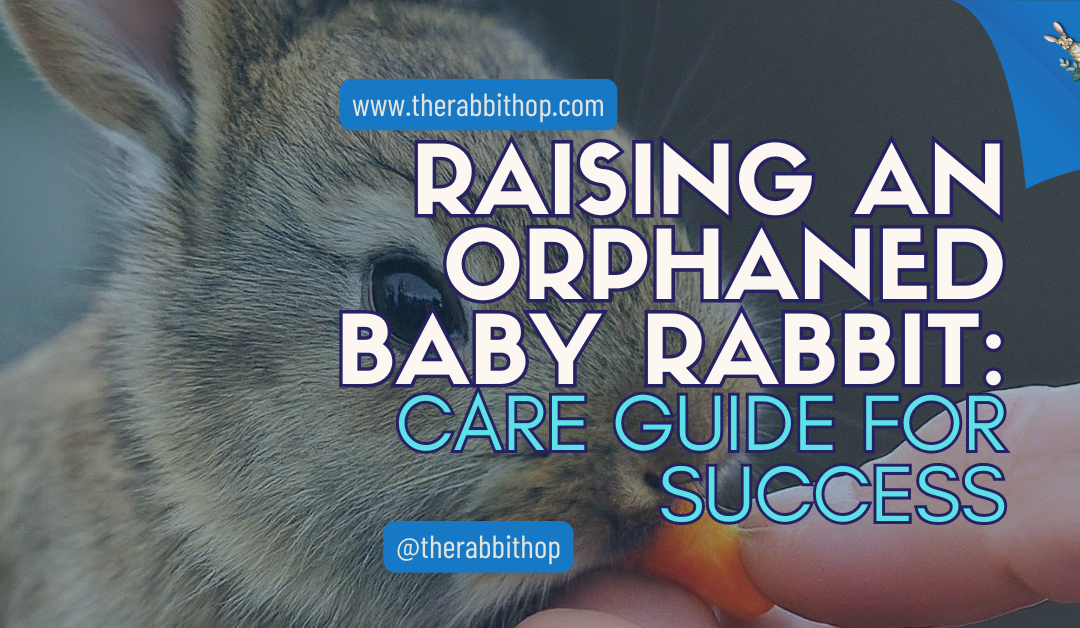Raising an orphaned baby rabbit is a delicate and rewarding experience that requires a mix of compassion, knowledge, and dedication. Imagine holding in your hands a tiny, vulnerable creature, depending entirely on you for survival. Whether you’ve found a lone kit or are caring for a rescued rabbit, this guide will walk you through the steps to ensure that the little one grows healthy and strong. From understanding their unique needs to providing the proper care at every stage of development, let’s explore the journey of raising an orphaned baby rabbit and giving it the best chance at life.
Raising an Orphaned Baby Rabbit: Essential Care Guide for Success
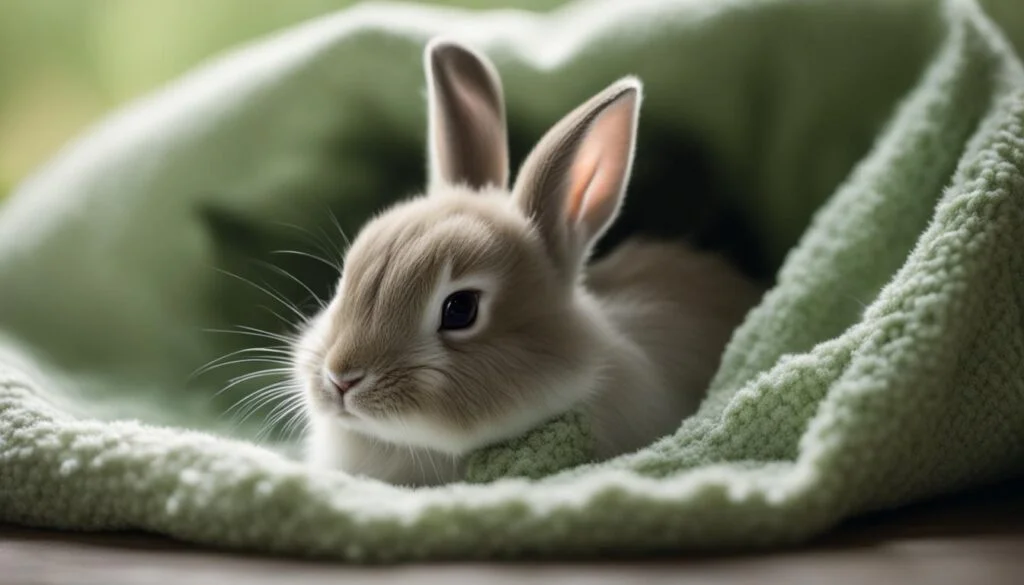
I readily agreed when a friend asked if I could help her raise an orphaned baby rabbit. She explained that the mom and littermates had been attacked, and she knew that I had successfully helped with other orphans before.
Raising an orphaned baby rabbit can be a challenging but rewarding experience. I’ve found that these tiny creatures can often thrive and grow into healthy adults with the proper knowledge and care. Baby rabbits need specific nutrition, warmth, and attention to survive without their mother.
Taking care of an orphaned rabbit requires dedication and a gentle touch. I’ve learned that creating a safe, warm environment is crucial for their survival. Feeding them the right formula at the correct intervals is vital to their growth and development.
It’s important to remember that wild baby rabbits have different needs than domesticated ones. I always recommend checking local wildlife laws before caring for a wild rabbit.
In many cases, it’s best to contact a wildlife rehabilitation center for expert help. My friend’s orphaned rabbit did not fit the wild rabbit’s needs. We were fine with trying to save this little one’s life.
Key Takeaways
- Create a cozy, warm nesting area with soft bedding and a heating pad, and keep it quiet and draft-free.
- Use kitten formula or goat’s milk for feeding and introduce solid foods like hay and pellets around three weeks.
- Keep vet contacts and first aid supplies handy to quickly respond to dehydration or infections
- Monitor for illness and maintain cleanliness; stimulate elimination after feedings until the rabbit can do it independently.
- Contact wildlife rehabilitators for wild rabbits, as keeping them as pets is often illegal and harmful.
Understanding the Biology of Baby Rabbits
Raising an orphaned baby rabbit can be challenging, as baby rabbits, called kits, are born blind and hairless. They rely entirely on their mother for the first few weeks of life. Kits grow quickly, doubling their weight in 6-7 days, making providing the proper care from the start crucial.
A kit’s eyes open around ten days old. Their ears begin to stand up at about three weeks. By 4-5 weeks, they start eating solid foods alongside their mother’s milk. Rabbit milk is wealthy. It contains:
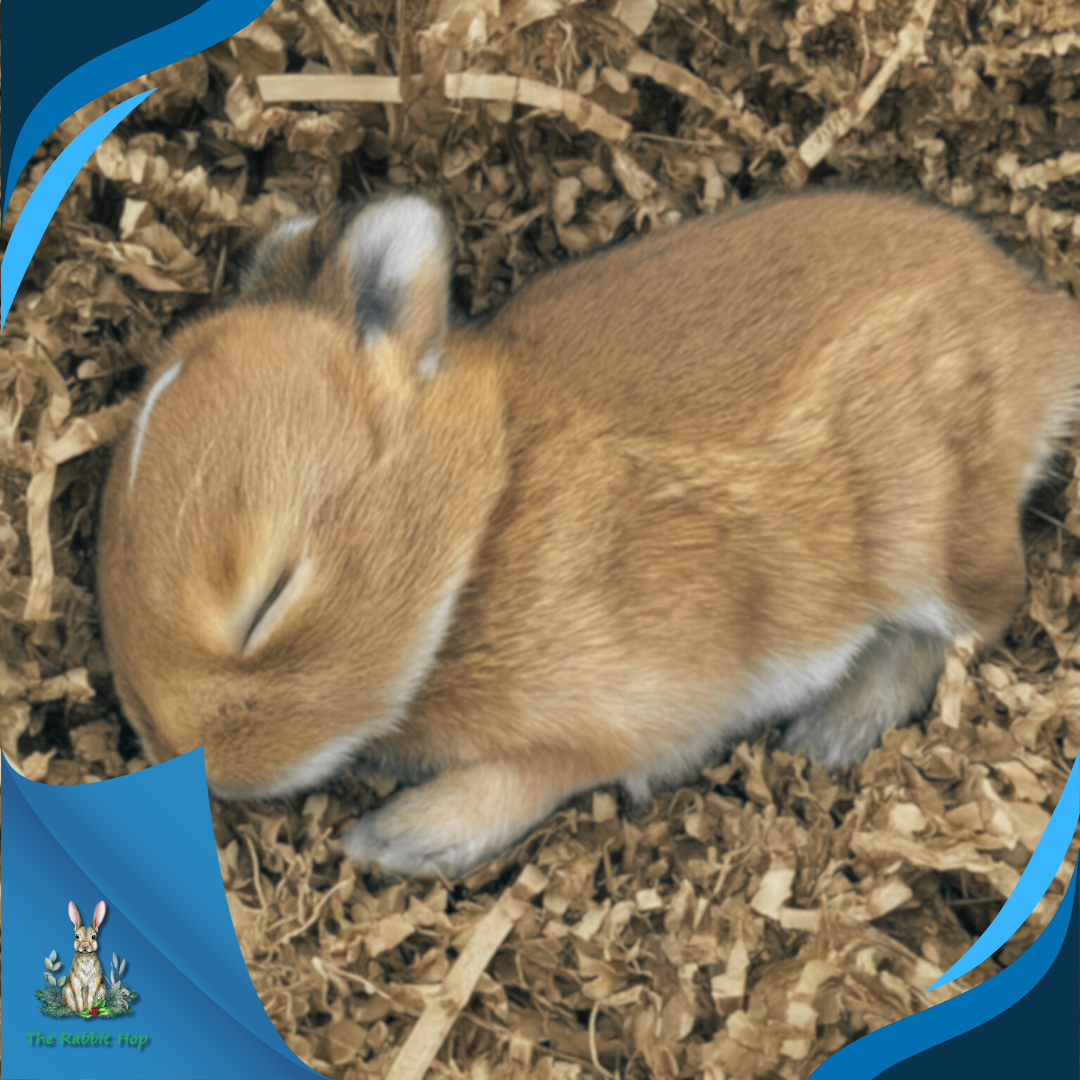
- 13-15% protein
- 10-12% fat
- 2% sugar
- 2-3% minerals
This high-calorie milk helps kits grow fast. A mother rabbit usually nurses her babies only once or twice a day for a few minutes. Kits are born with special teeth called “milk teeth.” These help them nurse. Their adult teeth start coming in at 3-4 weeks old. Baby rabbits can’t urinate or defecate on their own at first.
The mother stimulates this by licking their bellies and genital areas. When hand-raising orphans, I gently wipe these areas with a warm, damp cloth to mimic the mother’s actions. I’ve found that kits are ready to leave the nest at about three weeks old. By eight weeks, they’re fully weaned and independent.
Assessing the Situation
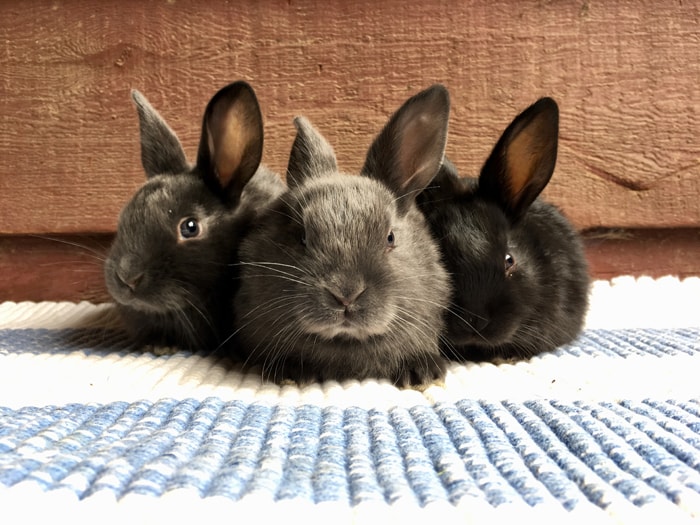
When raising an orphaned baby rabbit, it’s important to carefully assess whether the little one truly needs help when you find it alone. Mother rabbits often leave their babies for long periods to avoid drawing predators, which is normal behavior in wild rabbits. Interestingly, our domesticated rabbits often exhibit the same behaviors. I look for these signs to determine if a baby rabbit is orphaned:
- Visible injuries or bleeding
- Very cold to the touch
- Crying loudly or making distress noises
- Covered in flies or ants
- Extremely thin or dehydrated
If the baby looks healthy, I watch from a distance to see if the mother returns. She usually feeds her babies at dawn and dusk. A rescuer I know said he would create a circle of string around the nest and check if it was disturbed after 12 hours. This tells him if the mother has visited. With our domestic rabbits, we usually can watch and monitor. In spring and summer, rescuers are extra careful.
Many healthy baby rabbits are mistakenly thought to be orphaned during this time. If I’m sure the rabbit needs help, I act quickly for our domestic rabbits. Baby rabbits are fragile and need proper care right away. I always put the rabbit’s wellbeing first and encourage others to do so. If you are unsure and still trying to figure out what to do, contact a wildlife rehabilitator or a local vet for advice.
Did You Know?
To create a nutritious homemade substitute for rabbit milk, one can mix one part evaporated milk, one part water, and a small amount of plain yogurt. While goat milk is the best option, and commercial milk replacers are nearly as effective, this homemade mixture can be used in emergencies. Although it’s not a perfect solution, it can be temporary until goat milk or a commercial formula can be introduced.
Preparing for Immediate Care
Quick action is crucial when raising an orphaned baby rabbit. I’ll cover how to create a safe space and your supplies. These steps will help give the tiny bunny the best chance at survival.

Creating a Safe and Warm Environment
I always start by making a cozy nest box. A small cardboard box works well. This time, I had a plastic shoebox-style container to use. It’s easy to disinfect and keeps the nest area quite warm. We used fur and hay collected from a previous litter to help keep the baby warm.
We keep a supply of this for such times. However, on occasions when I don’t have any, I line it with soft towels or fleece blankets to keep the baby rabbit comfortable. Warmth is vital, so I use a heating pad set on low under half the box. This lets the bunny move if it gets too warm.
We are fortunate to live in a warm climate and have a small mudroom that is not air-conditioned. This makes the perfect place for the orphaned rabbit’s nest box to stay. I keep the nest in a quiet, dark place away from other pets and noise. Baby rabbits are easily stressed, so a calm environment is key.
If you don’t have such a room, another room with less traffic will work. Just make sure the room temperature stays warm and has good airflow. Fresh air is essential, but I avoid drafts. I cover part of the box with a light cloth for security. This setup mimics a natural rabbit nest and helps the orphan feel safe.
Gathering Necessary Supplies
I gather essential supplies before bringing the baby rabbit home. Kitten milk replacer or goat’s milk is crucial for feeding. I also get small syringes or eyedroppers to administer the milk. We have a small herd of dairy goats, so we usually have goat milk available. Using fresh goat milk ensures the best option for the new little orphan.
I keep sterile cotton balls or soft cloths handy for cleaning and stimulating the bunny. A digital scale helps me track weight gain. I stock up on hay and pellets when the rabbit starts eating solids. One of my favorite clothes is a soft microfiber towel. I keep these for dusting and cleaning, so I always have a supply of new (unused) microfiber to use with the babies.
They are soft and absorbent, making them ideal for cleaning a bit of dripped milk off the cheek and drying any residue from stimulating his bowel and urinary movements. I always have a first aid kit ready with tweezers, scissors, and antiseptic wipes.
A thermometer helps me monitor the nest’s temperature. I prepare a log to record feedings and weight changes. Lastly, I find a rabbit-savvy vet and keep their contact info nearby in case of emergencies. Having these supplies ready makes caring for the orphaned bunny much easier.
Feeding and Nutrition
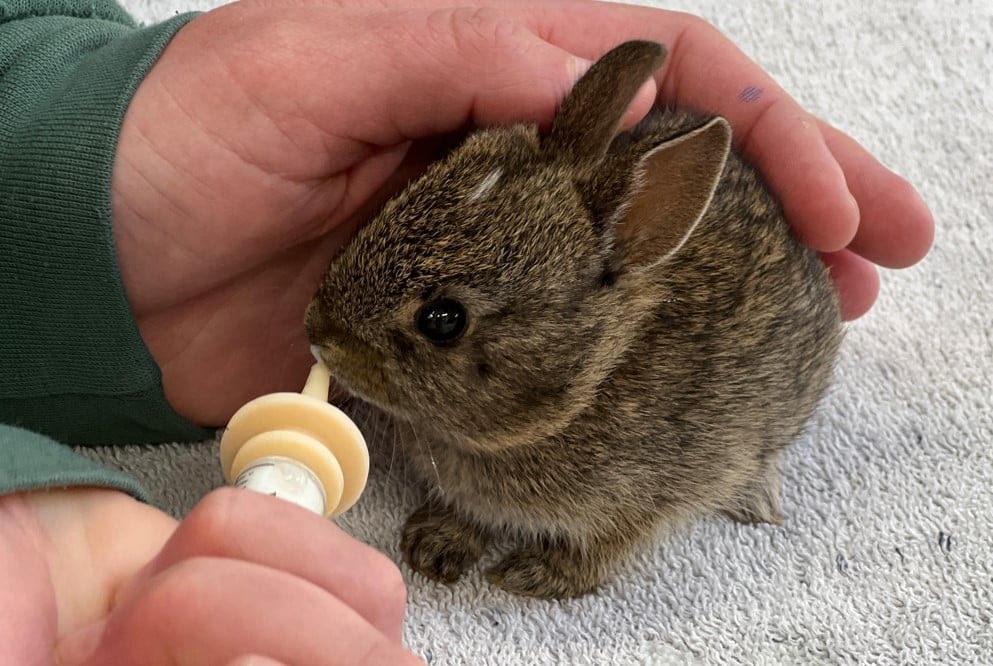
Proper nutrition is crucial when it comes to raising an orphaned baby rabbit. I’ll cover the key aspects of feeding, including milk replacer selection, feeding methods, and growth monitoring.
Choosing the Right Milk Replacer
I recommend using a kitten replacer or goat’s milk to feed orphaned baby rabbits. These options are closest to rabbit milk in composition. Kitten milk replacer (KMR) is suitable for baby bunnies up to 3 weeks old. But fresh goat milk is still my preference.
I avoid cow’s milk, as it’s not easily digestible for rabbits. A puppy milk replacer could be better due to its high-fat content. When using the formula, I always follow the package instructions carefully. I mix it fresh for each feeding to prevent bacterial growth.
Feeding Schedule and Techniques
I feed the babies three times a day for the first two weeks. I sometimes use a small syringe or eyedropper for feeding. Alternatively, the tiny baby bottles available for orphaned rabbits, kittens, and puppies make a great soft tip for the baby. It’s my preference, and we always keep one available.
This time, we started the baby with a small syringe, switching to the baby bottle two days later as he gained strength. It’s important to feed slowly to prevent aspiration. Here’s a general feeding guide:
- 1-2 weeks: 10-15cc KMR per feeding
- 2-3 weeks: 26-30cc KMR per feeding
Keep in mind that this amount is quite general. A tiny Dwarf rabbit will probably need less. A giant breed baby may need more. I start introducing hay and water around 2-3 weeks. This helps with the transition to solid foods. We offer a bit of pellets by four weeks of age.
I always warm the milk or replacer to about 100-103°F before feeding. I test it on my wrist to ensure it’s not too hot. Feeding milk that is too cool can cause stomach problems and may even not be accepted. Always make sure your temperature is in the correct range.
Monitoring Weight and Growth
I weigh the baby rabbits daily using a small digital scale. Healthy kits should gain about 10-15% of their body weight daily. If I notice weight loss or slow growth, I adjust the feeding amount or frequency. I’m careful not to overfeed, as this can cause digestive issues.
I keep a log of daily weights and feeding amounts. This helps me track progress and spot any potential problems early. I also watch for signs of dehydration, such as sunken eyes or dry mouth. Another sign of dehydration is wrinkled skin, especially on the underside. If I notice these signs, I increase fluid intake or seek veterinary help.
Health and Hygiene
Caring for an orphaned baby rabbit’s health and hygiene is crucial for its survival and wellbeing, significantly when raising an orphaned baby rabbit. I’ll cover how to spot health issues, maintain cleanliness, and help with elimination.

Spotting Common Health Issues
I always closely monitor orphaned baby rabbits for signs of illness. A healthy kit should be active, have a round belly, and bright eyes. If I notice lethargy, diarrhea, or a bloated stomach, I know something’s wrong. Dehydration is a major concern. I check for sunken eyes or pinch the skin gently – if it doesn’t spring back quickly, the kit needs fluids.
Proper nutrition is vital, so I watch for weight loss or poor growth. Respiratory issues can be deadly. I listen for sneezing or wheezing and look for discharge from the nose or eyes. If I spot any of these symptoms, I immediately contact a vet.
Maintaining Proper Hygiene
I keep the baby rabbit’s living area clean to prevent infections. I clean bedding daily and spot clean as needed. Soft towels or fleece make good bedding materials if fur is not available. Bathing isn’t usually necessary, but I use a damp cloth to wipe it clean if the kit gets dirty gently.
I’m extra careful around the face and ears. After cleaning, I make sure the rabbit is dehydrated using my microfiber towel to avoid chills. I wash my hands before and after handling the kit to prevent the spread of germs. If I’m caring for multiple rabbits, I handle the healthiest ones first to avoid cross-contamination.
Stimulating Elimination
Baby rabbits can’t eliminate waste on their own until about three weeks old. I carefully stimulate them to urinate and defecate after each feeding using a warm, damp cotton ball or soft cloth. This action mimics a mother rabbit’s tongue as I gently stroke the genital area downward.
This process usually takes a few minutes. For 3-week-old babies, I start providing a shallow litter box. I use rabbit-safe litter and place some of their droppings in it to encourage use. As they grow, they’ll naturally start using it on their own.
Here’s an additional video on how to hand-feed a baby rabbit.
By: TeeDiddlyDee
Raising an Orphaned Baby Rabbit: Long-Term Care Considerations
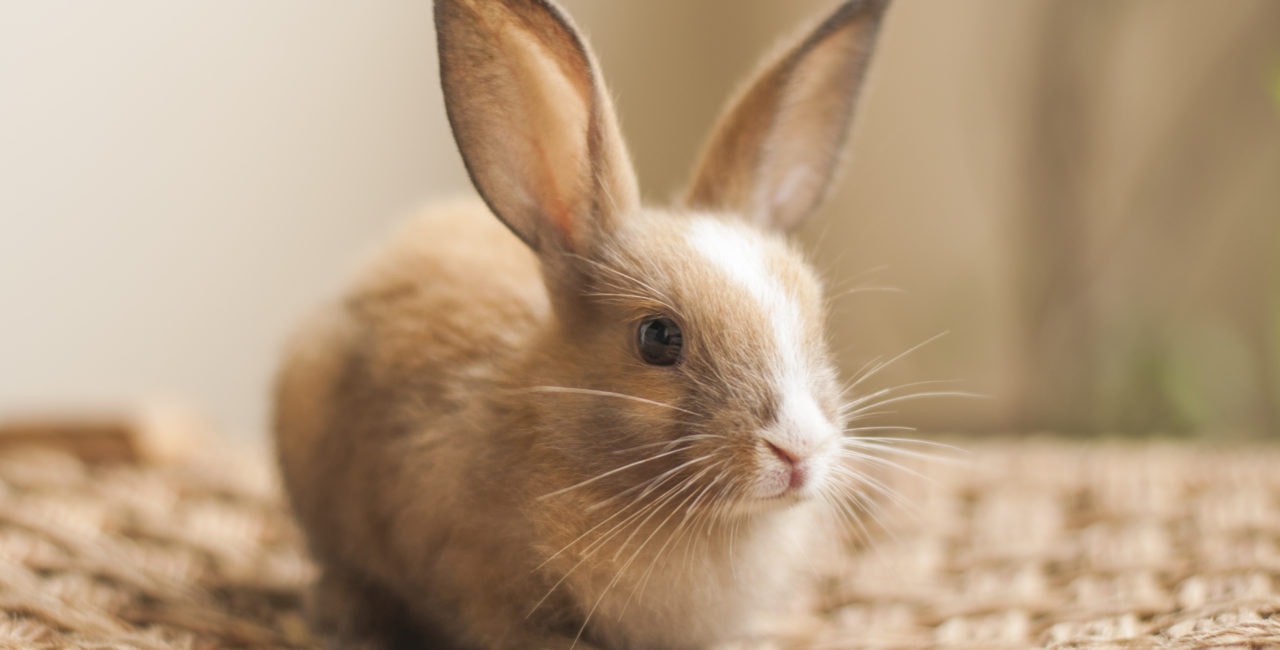
Raising an orphaned baby rabbit requires dedication and careful planning. I’ll cover key aspects of their ongoing care as they grow, including diet changes, socialization needs, and creating a suitable living environment.
Transitioning to Solid Foods
As baby rabbits grow, I gradually introduce solid foods to their diet. Around three weeks old, I offer small amounts of hay and add pellets a few days later. I make sure the hay is fresh and available at all times. Timothy Alfalfa hay, often referred to as T and A hay is a good choice.
I introduce vegetables slowly, starting with small pieces of leafy greens like romaine lettuce or carrot tops. I avoid high-sugar vegetables that can upset their stomachs. Water is crucial. I provide a shallow dish at first, then transition to a water bottle as they age. I always ensure clean, fresh water is available.
Socialization and Behavioral Training
Socializing orphaned rabbits is key to their development. I handle them gently and often, speaking in a soft voice. This helps them become comfortable with human interaction. I start litter box training early, around 4-5 weeks old.
I place a litter box in a corner of their enclosure and reward them when they use it. Rabbits need mental stimulation. I provide safe toys like cardboard tubes or willow balls for them to chew and play with. This helps prevent boredom and encourages natural behaviors.
Habitat Setup and Enrichment
A suitable habitat is crucial for a rabbit’s well-being. I provide a large, multi-level enclosure to offer ample space for movement and exploration, ensuring it is at least four times the size of the rabbit’s future adult size. The flooring is solid and easy to clean, avoiding wire floors to prevent injury. I line the floor with soft bedding such as fleece or recycled paper products.
Inside the habitat, I designate separate areas for sleeping, feeding, and play. To create a secure environment, I add hiding spots like cardboard boxes or tunnels that mimic their natural surroundings. Regular exercise is essential, so I either rabbit-proof a room or use a playpen for daily supervised playtime.
Raising an Orphaned Baby Rabbit: Emergency Situations and Veterinary Care
When raising an orphaned baby rabbit, I need to be ready for emergencies. Signs that require immediate vet care include:
- Not eating or drinking
- Diarrhea
- Lethargy or weakness
- Trouble breathing
- Injuries or wounds
- Fluid therapy for dehydration
- Antibiotics for infections
- Nutritional support
- Wound care
Legal Considerations and Wildlife Rehabilitation
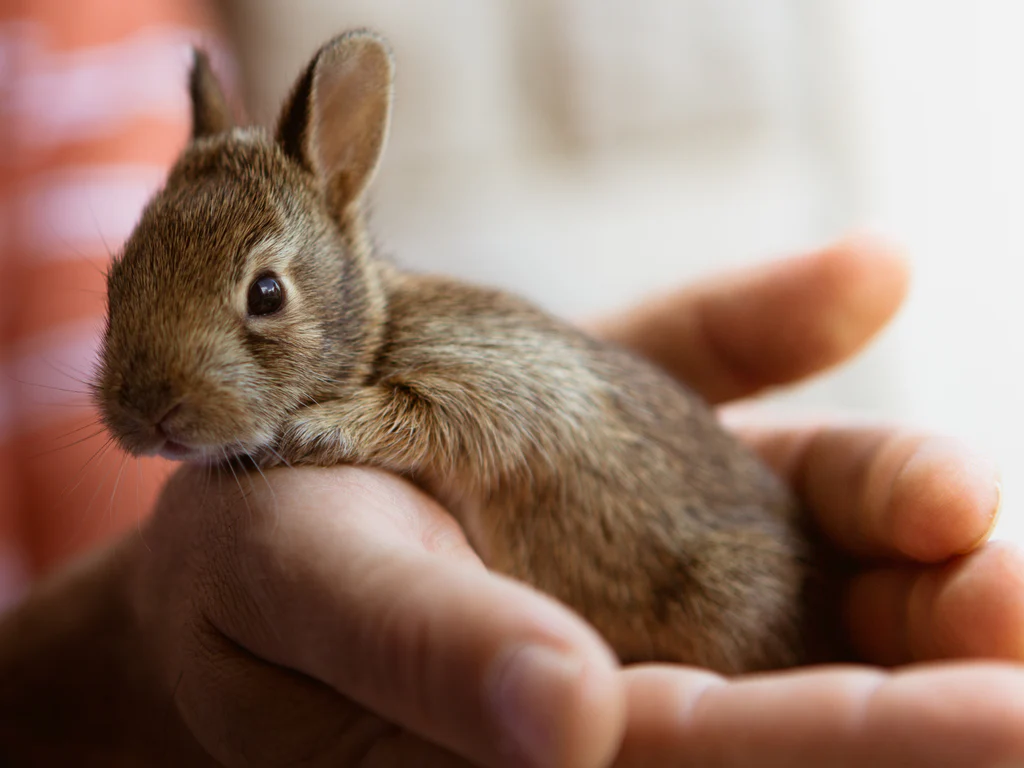
While my friend’s bunny was not wild, I think it’s important to cover the legal considerations for those who might find wild baby rabbits they think are orphaned. Raising an orphaned baby rabbit may seem kind, but it’s often illegal and can harm the animal.
In most places, only licensed wildlife rehabilitators can care for wild animals. I recommend checking local laws before trying to help. It’s usually best to leave wild rabbits alone. Mother rabbits often leave babies for long periods.
This is normal and doesn’t mean they’re orphaned. I suggest contacting a wildlife rehabilitator for help if a rabbit is truly orphaned or injured. These experts know how to care for wild animals properly. Here are some key points to remember:
- It’s often illegal to keep wild rabbits as pets
- Wildlife rehab requires special training and permits.
- Improper care can seriously harm baby rabbits.
Call animal control or a wildlife rescue if you find an injured rabbit. They can assess the situation and provide proper care if needed. Wild baby bunnies rarely need human help. The best thing to do is usually to leave them be. Nature knows best in most cases.
By: Happy Tails
The Rewarding Journey of Raising an Orphaned Baby Rabbit
Raising an orphaned baby rabbit is a challenging and rewarding endeavor that demands compassion, knowledge, and dedication. Ensuring the baby rabbit’s health involves meticulous care, from providing appropriate nutrition and creating a warm, safe environment to understanding their unique developmental needs. Each step, whether it’s selecting the right milk replacer or mimicking the mother’s care, plays a crucial role in the rabbit’s survival and growth.

Though the task can be demanding, the fulfillment of nurturing a vulnerable creature into a healthy and thriving rabbit makes the effort worthwhile. For those caring for a baby rabbit, whether wild or domesticated, it’s essential to approach the task with commitment and seek professional advice when needed. With the right care and attention, the journey of raising an orphaned baby rabbit can lead to a rewarding bond and a successful transition into a healthy life.
Frequently Asked Questions
What to Feed Orphaned Baby Rabbits to Ensure Proper Nutrition?
Orphaned baby rabbits need a specialized diet to thrive. I recommend using kitten milk replacer or goat’s milk as a substitute for rabbit milk. These options provide the necessary nutrients for growth. As the rabbits get older, I gradually introduce solid foods. Hay and pellets are good choices to start with.
How Can One Determine the Age of a Wild Baby Rabbit?
Determining a wild baby rabbit’s age helps me provide appropriate care. I look for key developmental markers like eye-opening, which occurs around 10 days of age. Fur growth and body size also give me clues about the rabbit’s age. Newborns are hairless, while older kits have a soft coat.
What Are the Best Practices for Caring for Newborn Rabbits That Have No Mother?
Caring for motherless newborn rabbits is challenging but doable. I create a warm, quiet nesting area with soft bedding to mimic their natural environment. Feeding is crucial. I use a syringe or small bottle to give them milk replacer every few hours, day and night.
Come Hop with Us on Social Media!
Do you adore your bunny? So do we at The Rabbit Hop!
Find us online for:
- Bunny Fun: Cute videos, interesting facts, and tips for keeping your bunny happy!
- Top Product Reviews: Find out what’s best for your fluffy friend.
- Bunny Community: Meet and connect with other bunny lovers just like you
Follow us on:
Let’s make your bunny the happiest hopper on the block!

